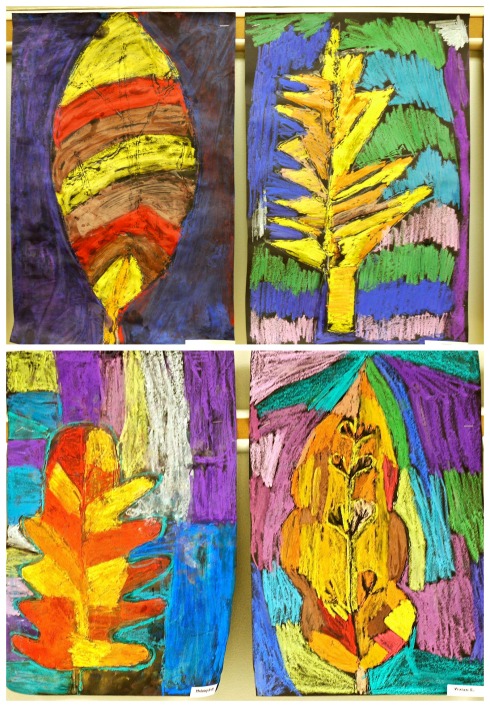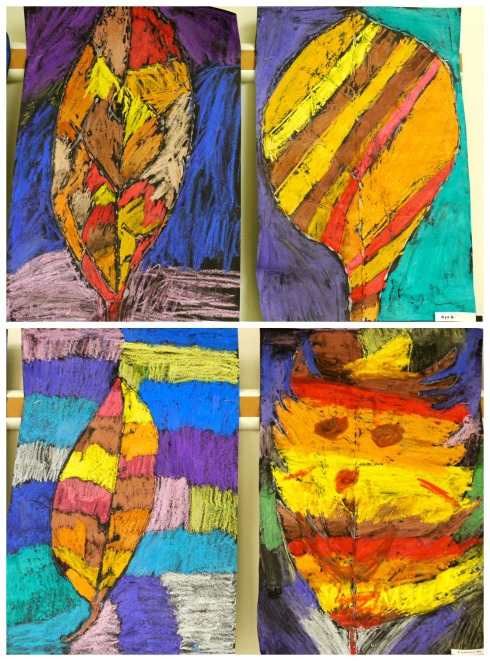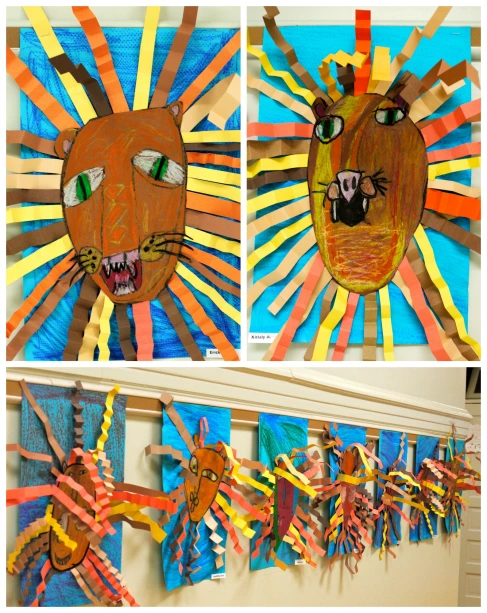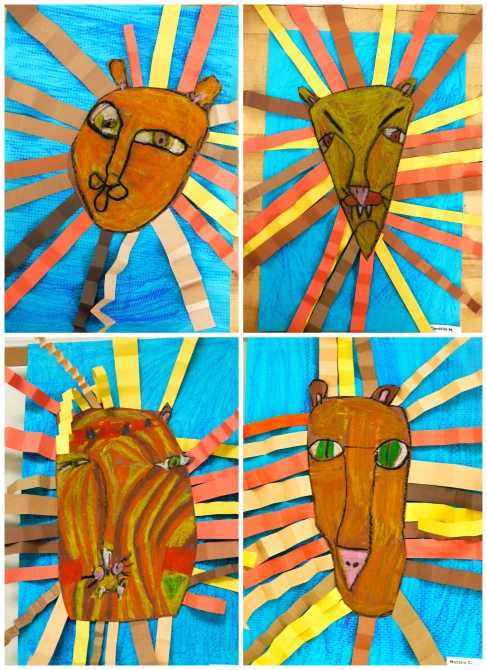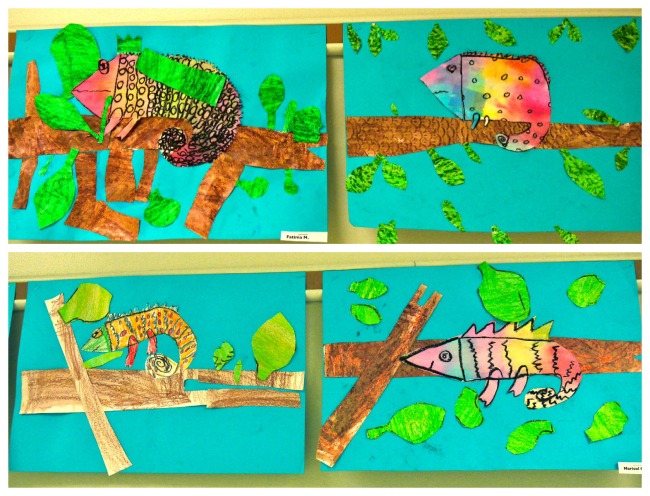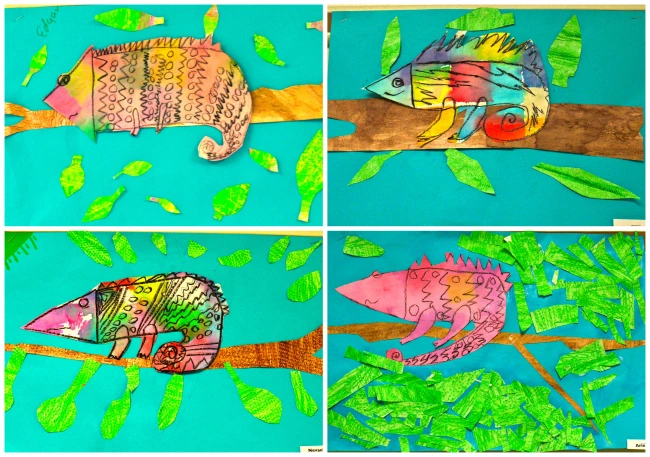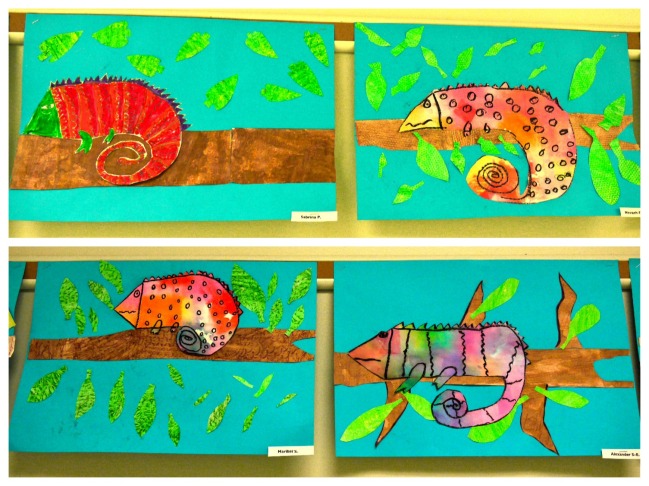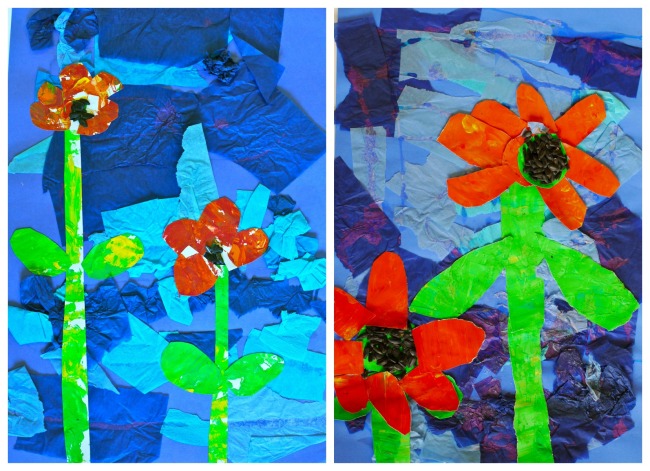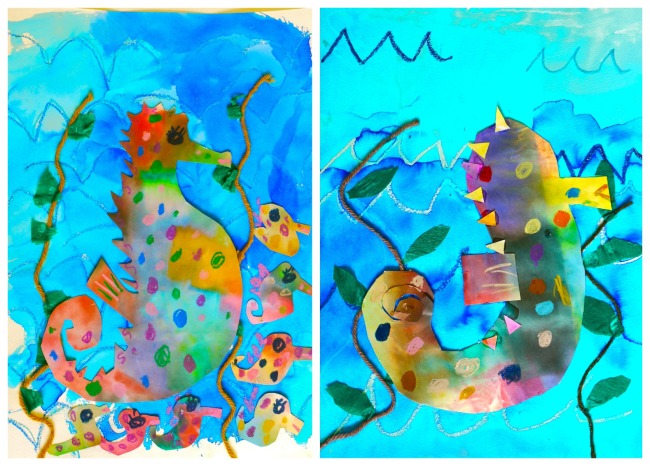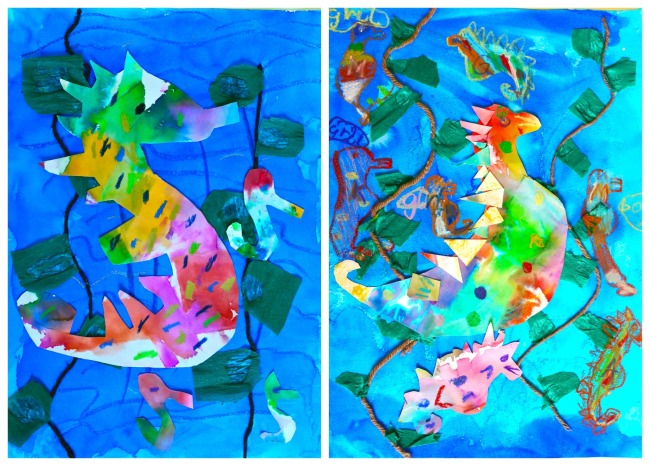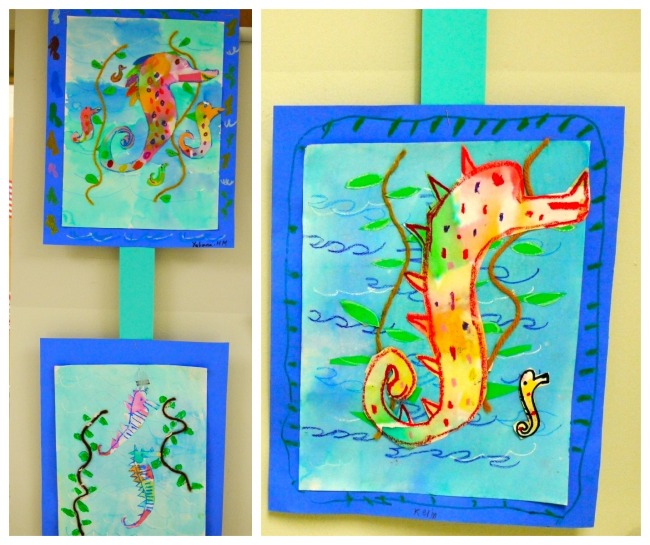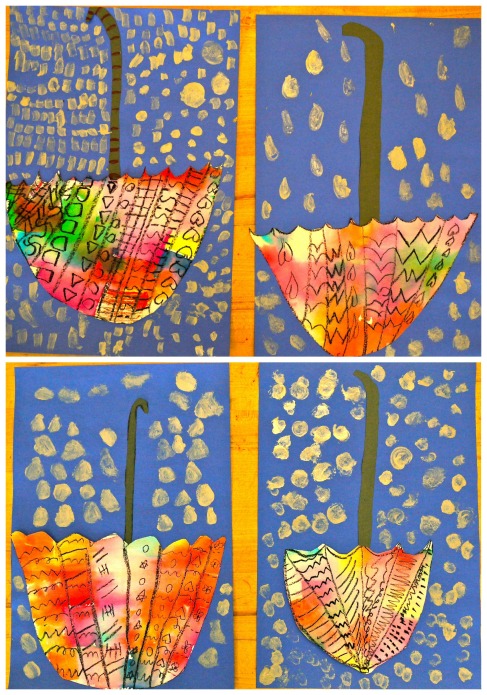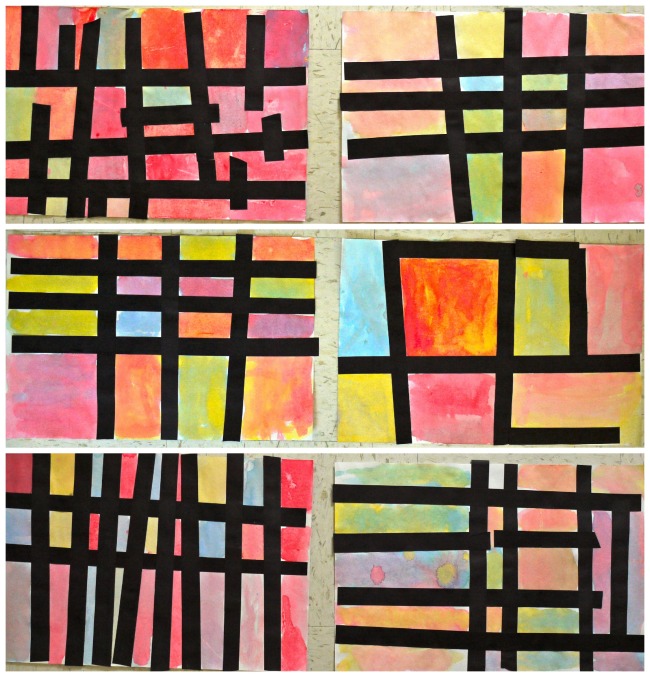Fall is such an inspiring time of year and I love to incorporate the changing leaves into art lessons whenever possible. I am currently working on this lesson with my third graders this year; these examples were created by the students at the bilingual school I previously taught at.
We start out the lesson by viewing examples of real leaves that students bring in. I also like to show them Autumn Leaves by Ken Robbins and Leaf Man
by Lois Ehlert for additional examples and inspiration. We study the contours of the leaves, noting how some have wavy, zig zag, or curvy lines. Some are symmetrical while others aren’t. We talk about their shapes and the patterns the veins make.
After sketching out ideas, students draw one large leaf on black paper then outline with white glue. The next class, we view some close-up leaf paintings by Georgia O’Keeffe and study the real leaves again, noticing how the colors blend softly together. Students use warm colors for the leaf and cool colors for the outside to create a bold contrast.
Each student’s leaf turned out so bright and colorful and the student’s loved how the lesson connected to the current season. They were so excited to share both their found leaves and their beautiful artistic representations!
